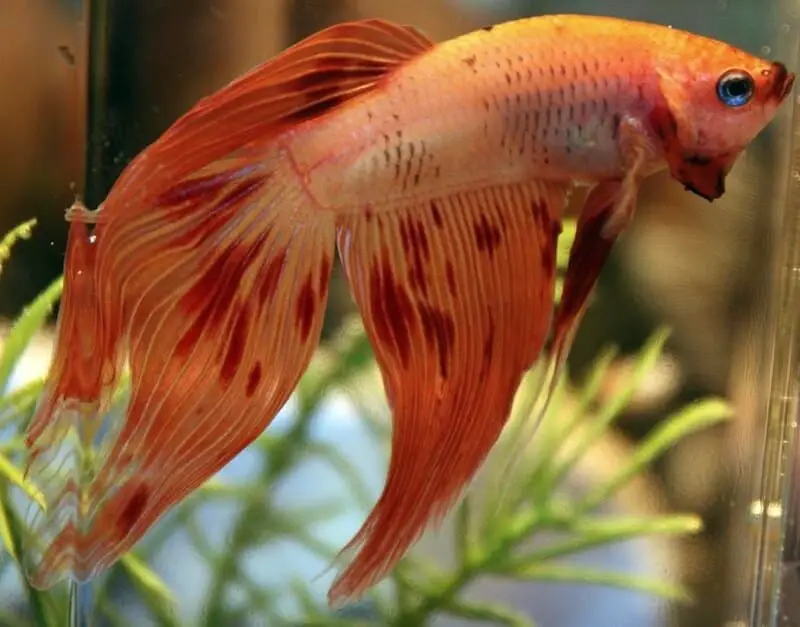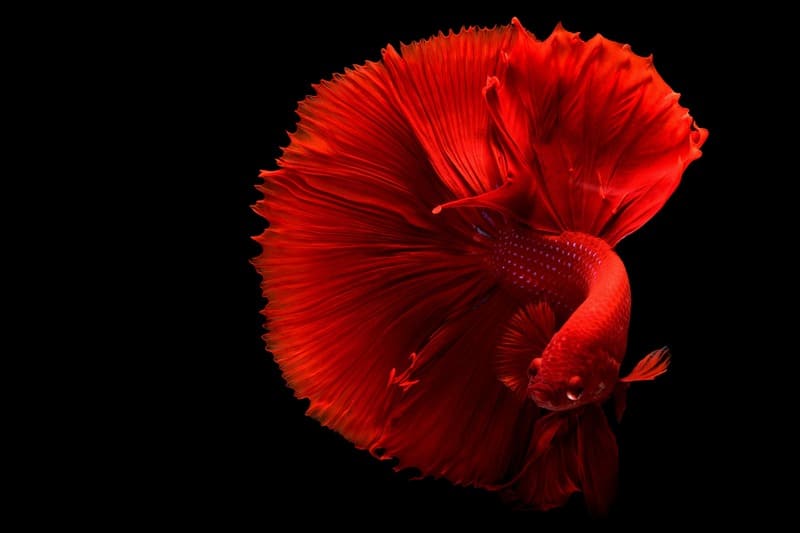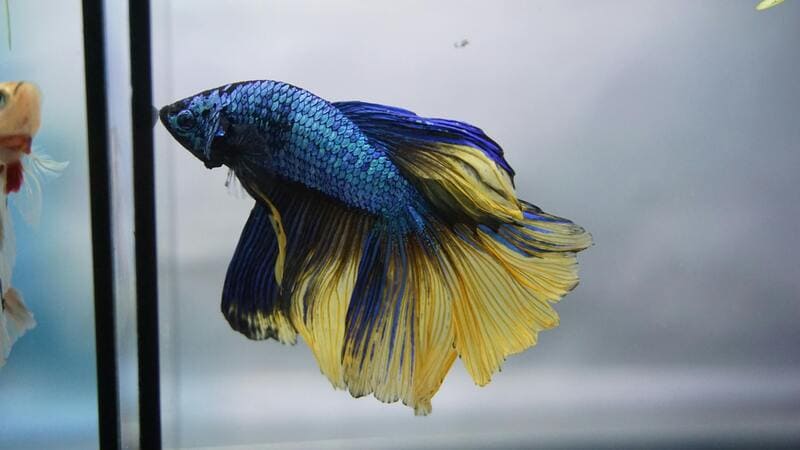Betta fish, scientifically known as Betta splendens, are one of the most popular and intriguing aquarium fish species. Known for their vibrant colors and unique personalities, bettas have captivated the hearts of many aquarium enthusiasts. One common question that arises in the world of betta fish keeping is whether these remarkable creatures are nocturnal or not. In this comprehensive exploration, we will dive into the world of betta fish to understand their natural behavior, habits, and whether they are truly nocturnal.

Understanding Nocturnality
Before delving into the world of betta fish and their activity patterns, it’s essential to grasp the concept of nocturnality. Nocturnal animals are those that are primarily active during the night and tend to rest or sleep during the day. They have evolved to thrive in low-light conditions and often possess specialized adaptations, such as enhanced night vision and acute senses, to navigate and hunt in the dark.
Conversely, diurnal animals are primarily active during the day and rest or sleep at night. Diurnal species have adaptations that help them function optimally in daylight, such as well-developed color vision and an affinity for seeking out sunlight.
Natural Habitat of Betta Fish
Understanding the natural habitat of betta fish is essential to determine their activity patterns. Betta splendens are native to Southeast Asia, primarily inhabiting slow-moving and often shallow waters such as rice paddies, ponds, small streams, and swamps. These natural habitats provide valuable insights into the environmental conditions that bettas have evolved to adapt to.
Key Features of Betta Fish Habitat
- Stagnant Waters: Betta fish are commonly found in still or slow-moving waters. These environments lack strong currents and waves, providing a stable and relatively calm setting for the fish.
- Shallow Waters: Betta fish are often found in shallow waters, where the depth can be limited to a few inches. These shallow waters are rich in aquatic vegetation and provide bettas with numerous hiding spots.
- Tropical Climate: The native habitats of bettas are located in tropical regions with warm and consistent temperatures. This influences their temperature preferences in captivity.
- Vegetation: Betta habitats are usually densely vegetated, with various plants providing cover and shelter. This vegetation supports their natural behavior and breeding.
- Low Light Conditions: The dense vegetation and limited sunlight penetration in these habitats result in relatively low light conditions, creating a somewhat dim or muted environment.

Are Betta Fish Nocturnal?
The question of whether betta fish are nocturnal or diurnal does not have a straightforward answer. Bettas are not strictly nocturnal or diurnal; instead, they exhibit crepuscular behavior. Crepuscular animals are most active during the twilight hours of dawn and dusk. These are the periods when the sun is just below the horizon, and the light is dim but not completely dark.
Crepuscular Behavior in Betta Fish
- Dawn and Dusk Activity: In their natural habitat, bettas tend to be most active during the early morning and late afternoon. This is when they engage in activities such as hunting for food, exploring their surroundings, and interacting with other fish.
- Shelter Seekers: During the brighter hours of the day, bettas often seek shelter among aquatic vegetation or other hiding spots to avoid direct sunlight. This behavior is a sign of their crepuscular nature, as they prefer low light conditions for comfort and safety.
- Nighttime Rest: While bettas may display some activity during dawn and dusk, they tend to rest or sleep during the night, which aligns with a nocturnal aspect of their behavior. During the nighttime hours, they may be less active and rest in their chosen shelter.
Captive Betta Behavior
In captivity, betta fish adapt to their environment, which can be different from their natural habitat. The behavior of captive bettas may vary based on the conditions and care they receive. Here are some factors to consider regarding the activity patterns of betta fish in aquariums:
- Tank Size and Layout: The size and layout of the aquarium can influence the behavior of bettas. In smaller tanks or those with minimal hiding spots, bettas may feel stressed and be less active. Larger tanks with ample hiding places can encourage more natural behavior.
- Lighting: The lighting in the aquarium can also impact betta behavior. Bettas may be more active during dawn and dusk when the tank lighting is dim or gradually changing.
- Feeding Schedule: Feeding times can affect betta activity. They often become active and excited during feeding, which can occur at any time of the day.
- Social Behavior: Bettas are known for their territorial and sometimes aggressive nature. Their interactions with other fish in the tank can influence their activity levels.
- Temperature: Maintaining the right temperature is crucial for betta health and behavior. They may become lethargic in cooler water and more active in their preferred temperature range.
- Water Quality: Clean and well-maintained water conditions are essential for the health and vitality of bettas. Poor water quality can lead to stress and less activity.
- Stress Factors: Any sources of stress, such as tankmates that provoke aggression or poor water conditions, can affect betta activity. Minimizing stress is essential for their well-being.
Behavioral Indicators
To determine whether your betta fish are crepuscular or exhibit different activity patterns, it’s important to observe their behavior. Some behavioral indicators that can help you understand their activity rhythms include:
- Feeding Behavior: Pay attention to when your bettas are most active for feeding. Many bettas become excited and active during feeding times.
- Shelter Usage: Observe how often your bettas seek shelter in the aquarium. If they prefer to hide during the day and become more active during dawn and dusk, this aligns with their crepuscular behavior.
- Interactions with Other Fish: If you have tankmates, observe how your bettas interact with them. Aggressive behavior is common among bettas, and it can affect their activity levels.
- Resting Patterns: Note when your bettas rest or sleep. If they are most inactive during the nighttime hours, it suggests nocturnal behavior.
- Exploration: Pay attention to when your bettas explore their surroundings. This can be an indicator of their activity levels.
Individual Variations
It’s important to recognize that individual bettas may exhibit varying activity patterns. Some bettas might be more active during the day, while others are predominantly active during the crepuscular hours. Their behavior can also change over time, influenced by their environment and overall health.

Promoting Natural Behavior in Betta Fish
To ensure that your betta fish exhibit their natural crepuscular behavior and thrive in captivity, you can take several steps to create an environment that supports their well-being:
- Provide Adequate Tank Size: Bettas need space to swim and explore. A larger tank with appropriate hiding spots and decorations can promote natural behavior.
- Use Dim Lighting: Consider using dim or adjustable lighting in the tank to mimic the natural lighting conditions during dawn and dusk.
- Aquatic Plants: Live or artificial aquatic plants provide shelter and hiding places for bettas, which can encourage natural behavior.
- Monitor Water Quality: Maintaining pristine water conditions is essential for betta health. Regular water changes and proper filtration are crucial.
- Appropriate Tankmates: If you have tankmates, choose species that are compatible with bettas and won’t stress them out.
- Feeding Routine: Establish a consistent feeding routine to encourage regular activity and prevent overfeeding.
- Water Temperature: Keep the water temperature within the preferred range of 78 to 80 degrees Fahrenheit (25-27 degrees Celsius) to support betta health and vitality.
- Enrichment: Provide toys and objects that can serve as enrichment for your bettas. These can include floating betta logs, mirrors, or safe decorations.
- Regular Observation: Spend time observing your bettas to understand their individual behavior and needs. This will help you tailor their care accordingly.
- Avoid Overcrowding: Do not overcrowd the tank with too many fish or decorations, as this can lead to stress and aggression.
Conclusion
Betta fish, while not strictly nocturnal or diurnal, display crepuscular behavior. They are most active during the dawn and dusk hours, while they tend to rest or sleep during the night. Understanding and appreciating their natural activity patterns is crucial for providing them with the care and environment they need to thrive in captivity.
Observing the behavior of your betta fish, providing them with an appropriate tank setup, and maintaining optimal water conditions are key to promoting their natural behavior. Creating an environment that mimics their natural habitat and respects their crepuscular tendencies will lead to healthier and happier bettas in your aquarium.
